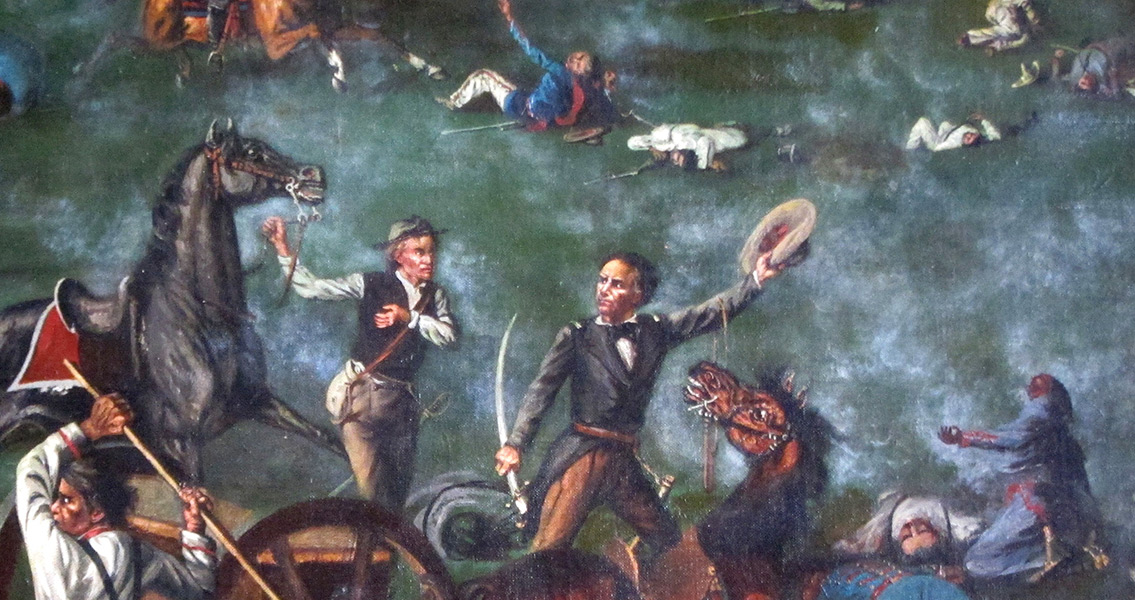<![CDATA[In the midst of the Siege of the Alamo, a group of American Texans met at Washington-on-the-Brazos and declared Texas' independence on 2nd March, 1836. It heralded the start of a decade of independence for Texas, a key period in the state's transition from Mexican to US territory. Pointedly, the declaration and the events leading up to it were also significant in mapping the US' rise at the expense of its neighbour to the south. Although the independent Republic of Texas no longer exists, the annual Texas Independence Day celebration continues to commemorate the day in 1836 that 59 delegates met in Washington, Texas to announce their independence from Mexico. Each year, a two day festival of activities takes place around the site of the declaration, showing the date is still considered vitally important in the state's history. Since Mexico had won its independence from Spain in 1821, it governed the territory of Texas (then called Tejas). However, original settlers to the expansive yet sparsely populated territory enjoyed significant autonomy from the Mexican government. US citizen Stephen F. Austin negotiated an agreement which allowed him to lead some 300 American families to the Brazos River to form a new settlement. The terms of the agreement stated that any newcomers to the territory would have to be loyal to the Mexican government, Roman Catholic, and willing to learn the Spanish language. Although the settlers initially respected these conditions, as the rate of immigration to the region increased the stipulations were increasingly ignored. By the 1830s, protestant immigrants from the US outnumbered native Tejanos, and the Mexican government began to take measures to try and reassert its control over the valuable territory. In 1831, it restricted US immigration to Texas, causing outrage among those who lived there but still had families in the US. Shortly after, the Mexican government raised tariffs on goods imported from the USA, again, in an attempt to stop the growing US influence in the region. Just as crucially, the Mexican government abolished slavery in 1831. Many of the US immigrants to Tejas had come from the South of the US, building up livelihoods in the area that relied on slave ownership. The increasingly volatile situation exploded in 1835, shortly after General Antonio Lopez Santa Anna had come to power in Mexico. Santa Anna's government was built on Mexican nationalism and a centrist administration. His new constitution endeavoured to take power away from individual regions in an attempt to consolidate national unity. It was deeply unpopular and triggered rebellion around Mexico, and particularly in the increasingly autonomous Texas. In October, English speaking inhabitants from the town of Gonzales, east of San Antonio, fought with Mexican soldiers sent to take the town's cannon. The Mexicans were forced to retreat, the Texan Revolution had begun. A provisional government was created by the American settlers in Texas, and war broke out. For the last few months of 1835, the Texan military won a series of battles against Mexican forces, asserting their dominance in the region, but in January, Santa Anna personally accompanied a 3000 strong Mexican army into Texas. At the end of February, Santa Anna's forces descended on the Alamo, starting one of the most famous sieges in history. Four days after the declaration of independence, the Alamo fell, at great cost to Santa Anna's forces. Six weeks later, a surprise attack by the Texans at San Jacinto saw a devastating defeat for the Mexicans, with Santa Anna himself captured and forced to sign a treaty recognising Texas' independence. A decade later, Texas joined the United States, an event which triggered the Mexican-American War, and further upset the balance between slave and non slave states in the USA. ]]>
Texas Declares Independence in the Midst of the Alamo
